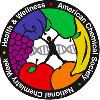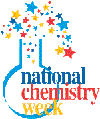Preventing Infections: Print Resources
This is a collection of print resources about preventing infections. A separate collection of Electronic Resources is also available.
Below are outstanding and recommended titles by the National Science Teachers Association that fit this year’s theme for National Chemistry Week. Descriptions are based on reviews from the NSTA web site.
Key: E = Elementary (K–5), I = Intermediate (6–8), HS = High School (9–12), C = College, G = General Public
- ACHOO! THE MOST INTERESTING BOOK YOU’LL EVER READ ABOUT GERMS. Trudee Romanek. Tonawanda, NY: Kids Can Press Ltd., 2003. 40 pp. ISBN 1553374509. (E, I)
- This book is about good and bad germs, what they are (viruses, bacteria,
fungi, and protozoa), how they live (in and on us and our surroundings),
how they affect our lives (disease, body odor, halitosis, pimples, etc.),
and how we have learned to deal with them (immunity, antibiotics,
vaccines, and hygiene). It is full of accurate information presented in
manageable segments and colorful, relevant, and amusing illustrations.
Eight “You Try It” sections also expand students’
understanding with a selection of activities and investigations that can
be done in class or at home using simple materials. Appropriate safety
precautions are provided for the activities.
Source: NSTA Recommends - FIGHTING INFECTIOUS DISEASES. Robert Snedden. Chicago, IL: Heinemann Library, 2000. 32 pp. ISBN 1-57572-243-7. (I)
- This interesting and well-written book looks at agents that cause
diseases, the effect of diseases on humans, and the human immune system.
Many photographs accompany the text. General information about disease
agents and methods used to fight them are included along with
discussions of various diseases. It begins with basic background
knowledge about disease. Pathogens that have been virtually eliminated,
such as smallpox, are described as diseases like AIDS that are
currently devastating certain populations. Other topics discussed
include vaccinations, emerging diseases, continued medical research,
and searches for cures. The book concludes with a thought-provoking
chapter on biological weapons. Includes a glossary, index and
supplemental readings.
Source: NSTA Recommends - THERE’S A ZOO ON YOU. Kathy Darling. Brookfield, CT: Millbrook Press, 2000. 48 pp. ISBN 0-7613-1357-5. (E, I)
- This book is an entertaining look at the microscopic critters that
inhabit our bodies. It is well written, attractive, and enlightening.
A sensitive reader will be intrigued, amazed, and even shocked by her
text; bacteria on your face, parasites under your nails, mites on your
skin, and even tooth amoebas! Dramatic photographs of enlarged
parasites and scanning electron micrographs will hook even those who
avoid science. Students will find the unique images weird and appealing.
Source: NSTA Recommends - 101 QUESTIONS ABOUT YOUR IMMUNE SYSTEM YOU FELT DEFENSELESS TO ANSWER…UNTIL NOW. Faith Hickman Brynie. Frederick, MD: Twenty-First Century Books, 2000. 176 pp. ISBN 0-7913-1569-1. (HS)
- This book provides information about the basic foundations of the
immune system, its component parts, the natural processes involved in
it, what goes awry when it malfunctions and how it interacts with
foreign substances. The information goes beyond the types of white
blood cells, the nature of anaphylaxis, or the inflammation response
found in most general texts. The vocabulary, as one might expect, gets
fairly technical but terms are clearly identified and explained.
Includes glossary, end notes, bibliography, and additional resources.
Source: NSTA Recommends
Copyright © 2004 American Chemical Society


